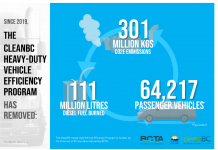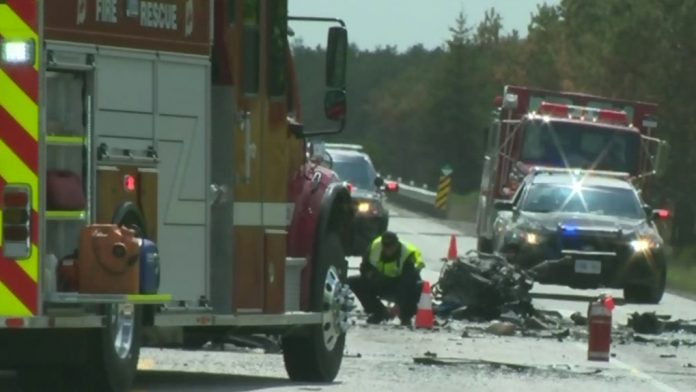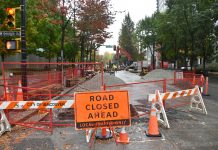The number of collisions is on the rise in Northern Ontario. Initial reports indicate that crashes in the region have begun to steadily increase since about 2017. Current estimates show that there has been around a 40% increase in heavy truck collisions along highways 11 & 17 year over year. Residents and lobby groups are calling for increased large truck enforcement in small towns and cities in the area.
Northern Ontario has always been a tough lane to operate in. The terrain, road conditions, extreme winters and lack of rest areas make travel between North Bay & Thunder Bay a very challenging experience. Not all lost however, the beautiful scenery & regular miles do reward drivers who travel through the region.
Social media platforms regularly post abhorrent examples of collisions as well as aggressive & careless driving acts committed by commercial drivers; begging the conclusion that some drivers are lacking simple patience while plagued with an aviation safety concept called ‘get there itis.’ Highways in Northern Ontario are by and large narrow 90KM/h posted two-lane roadways with limited passing zones sprinkled around every so often. The terrain is gorgeous & rewarding but at the same time treacherous. Many drivers who regularly travel through the region regularly may be experiencing a form of bias called ‘optimism bias’ causing them to not fully appreciate the numerous hazards to which they are exposed and underestimate the likelihood of negative consequences materializing such as a collision. Common hazards experienced in the region include narrow roads, terrain rife with bends & inclines, limited safe rest areas, roadways lacking maintenance, extreme weather, especially winter weather, a variety of large animals, construction zones, limited visibility & at times other road users. Some of the most cited complaints are tailgating, speeding through towns and villages & unsafe passing. Almost daily, we see a video on social media of a commercial driver passing carelessly in the region. In some cases, the aggressive behaviour, let’s call it peer pressure, causes some drivers to increase their speeds to match the flow of traffic, which may not be the safest choice.
As with every safety issue we examine, there isn’t one single piece of the puzzle that can be identified as the sole cause without risking issue oversimplification. A good example often proposed is increasing enforcement, while adding more police to patrol the region is a good control, it is not a panacea. Speed seems to be a common denominator for many collisions in the region; simply put, drivers are going too fast to be able to stop safely given what can be seen ahead. Other factors cited attribute the problem to lack of training and experience, the way drivers are compensated, increased e-log adoption, organizational pressure due to staffing shortages, limited safe parking areas.
One of the most frightening examples of oversimplification I see is scapegoating junior drivers. While entry level training is not without controversy, limited studies do not support this accusation. Initial studies tend to show that junior drivers who have been properly trained do respect workplace hazards and heed the warnings. According to an ATRI study, junior drivers tend to be involved in minor accidents 71% had zero safety events and 20% had only 1. While a meagre 2.4% had a DOT recordable collision. What we do see however is a sharp increase in safety events 6 months to 2 years after training which supports the need for re-training at regular intervals as drivers may be breaching the ‘200th hour.’ Unfortunately, the media attention tends to go to the most spectacular incidents involving junior drivers, insert Humboldt, resulting in the dreaded anchoring effect when we examine the issue. If we can’t develop and mentor the next generation driver, where is the industry headed? We need to look internally at our own loss experience to see whether our onboarding program is functioning well.
For the most part, I think that many of the issues in Northern Ontario stem from negative attitudes, trucking is a tough lifestyle which has become exponentially more demanding over the years it seems drivers are exposed to unrelenting stress while performing their duties. There was a time when driving in Northern Ontario, received a certain amount of respect comparable to driving through the rockies. Drivers knew that there were limited passing areas and behaved accordingly, exercising patience. They left space between vehicles, waited patiently to reach a safe passing zone, respected winter weather and slowed down. Drivers had confidence that a driver following the speed limit or travelling at less than the flow of traffic would move over & facilitate passing when safe to do so. There is a correlation between the increased implementation of E-logs & rate of collisions in the region, drivers might very well be racing against the clock. While I am confident that they prevent falsification & encourage drivers to comply with the regulations may have come with an additional problem much more difficult to quantify, pressure. E-logs show a driver in real time exactly how much time they have available to the to drive, pardon them for trying to maximize those hours and income. By maximizing their hours, drivers may underestimate transit times, skip breaks & drive when less than fully focused on the driving task. Further compounding the problem, many other drivers will be following similar work-rest cycles, putting pressure on parking resources. While e-logs to present certain challenges, the rules are there to reduce the risk of driver fatigue impairment by way of log falsification as such, drivers should be encouraged to speak up about the challenges they experience.
Organizations should also look critically at their contribution to the problem. Organizations should ask: are we inadvertently rewarding certain behaviours? Do we give our drivers realistic transit times, can we better manage the journey by adding in mandatory rest stops? Are there solutions we can look at such as interlining or setting up a switch along the way? Can we look at better hours of service training so our drivers can better understand & best utilize the berth split? What about your refresher training interval? When was the last time drivers attended defensive driving courses? When was the last time we examined genuine driver concerns?
All told, there is no one answer to the problem. We can sit and say well the other guy… but yes, even some of our drivers are a part of the problem. We need to study our internal loss data, gain insight into which drivers are causing the issues and focus on their attitudes and views on safety critical behaviours which contribute to accidents. If we all do our part, look internally at how we may be inadvertently rewarding unsafe behaviours, work to influence all our drivers to adopt safe habits and lead by example changes can be made while attracting less attention from enforcement officials!






















